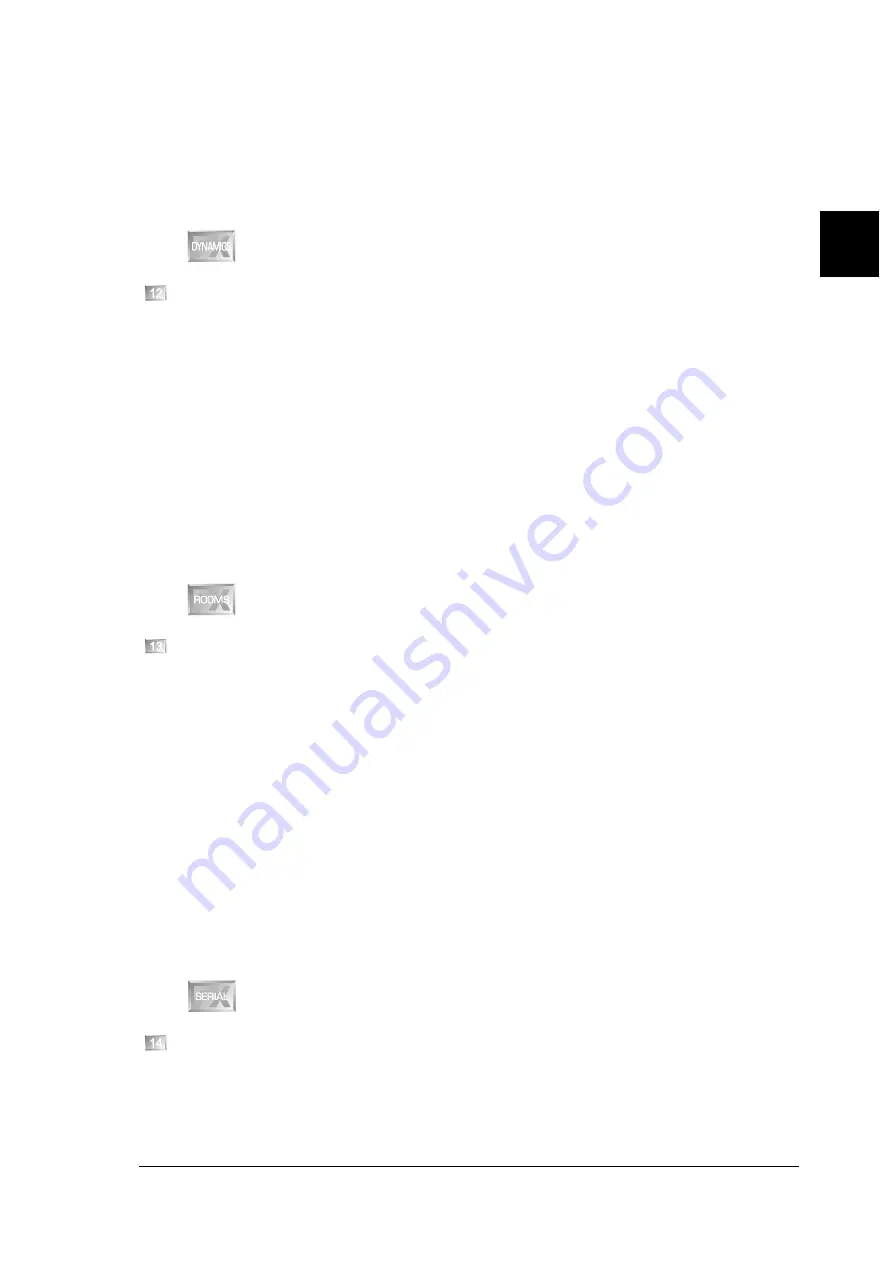
15
E
EDIT B: Spread: controls the depth of the sound image.
EDIT C: Crossover Frequency: adjusts the 3D effect onset.
In this algorithm the MIX function controls the ratio of middle vs. side signals.
+
When you increase stereo width on heavily reverberated audio material, the reverb can sound
unnatural and too intense.
Denoiser
As their name implies, denoisers are used to eliminate or at least reduce noise and other interference. This
algorithm also includes a noise-gate and an amplitude-controlled low-pass filter. Use this algorithm of the
MODULIZER PRO to eliminate unwanted noise tails.
The parameters:
VARIATION: Gate Threshold: determines the threshold below which the gate cuts off the signal.
EDIT A: Gate Hold: determines the time after which the gate closes once the signal has fallen below thresh-
old (50-1,000 ms).
EDIT B: Gate Release: the gates release time depends on the sound, e.g. percussive material requires
much quicker release times than, for example, keyboard pads with long decays (1-800 ms).
EDIT C: Lo Pass Frequency: controls the cut-off frequency of the low-pass filter.
EDIT D: Lo Pass Depth: adjusts the amount by which the signal level influences the low-pass filter.
Ultra Ambience
Room reverb consists of early reflections followed by the actual reverb. Unlike the DSP1000P which emulates
both components, this effect simulates only the first 15 early reflections. Since our hearing uses these reflec-
tions to determine the room size, they can be used to generate a subtle and impressive kind of compression
of the audio material, without modifying the signal with long reverb tails. This effect is particularly suited for
vocals and also for drum instruments.
The parameters:
VARIATION: Pre-delay: determines the predelay time between original signal and first reflections (0-200 ms).
EDIT A: Size: adjusts the room size.
EDIT B: Wall Damp: this parameter controls the damping factor of the walls.
EDIT C: Stereo Width: adjusts the stereo width of the early reflections.
EDIT D: Reflections: sets the number of early reflections (1-15).
+
Ambience is a very popular effect for vocal sounds, as it provides voices with a warm and rich
sound and brings them to the foreground when mixing.
Voice Canceler
This effect is particularly suited for karaoke or the rehearsal of lead vocals. The Voice Canceler eliminates
mono (midrange) vocal tracks from stereo recordings. The low-frequency range, which in most cases is also
recorded in mono, remains unaffected. Backing vocals which tend to be recorded in stereo will remain unaf-
fected. Signals with a lot of stereo information (e.g. chorus effects etc.) will not be eliminated completely.
1. INTRODUCTION
All manuals and user guides at all-guides.com
















































